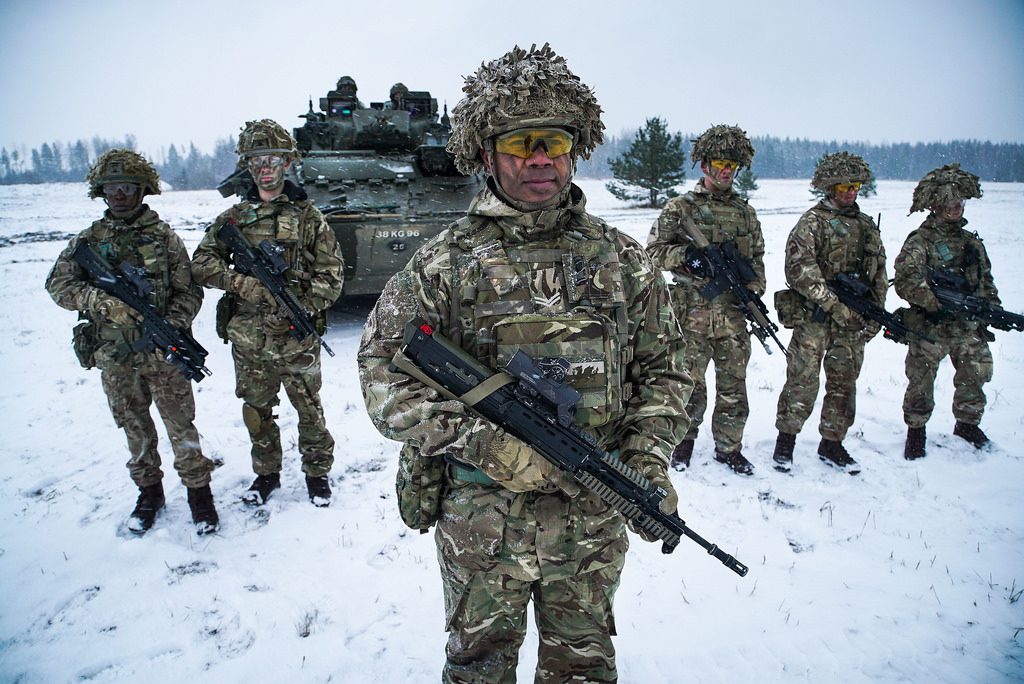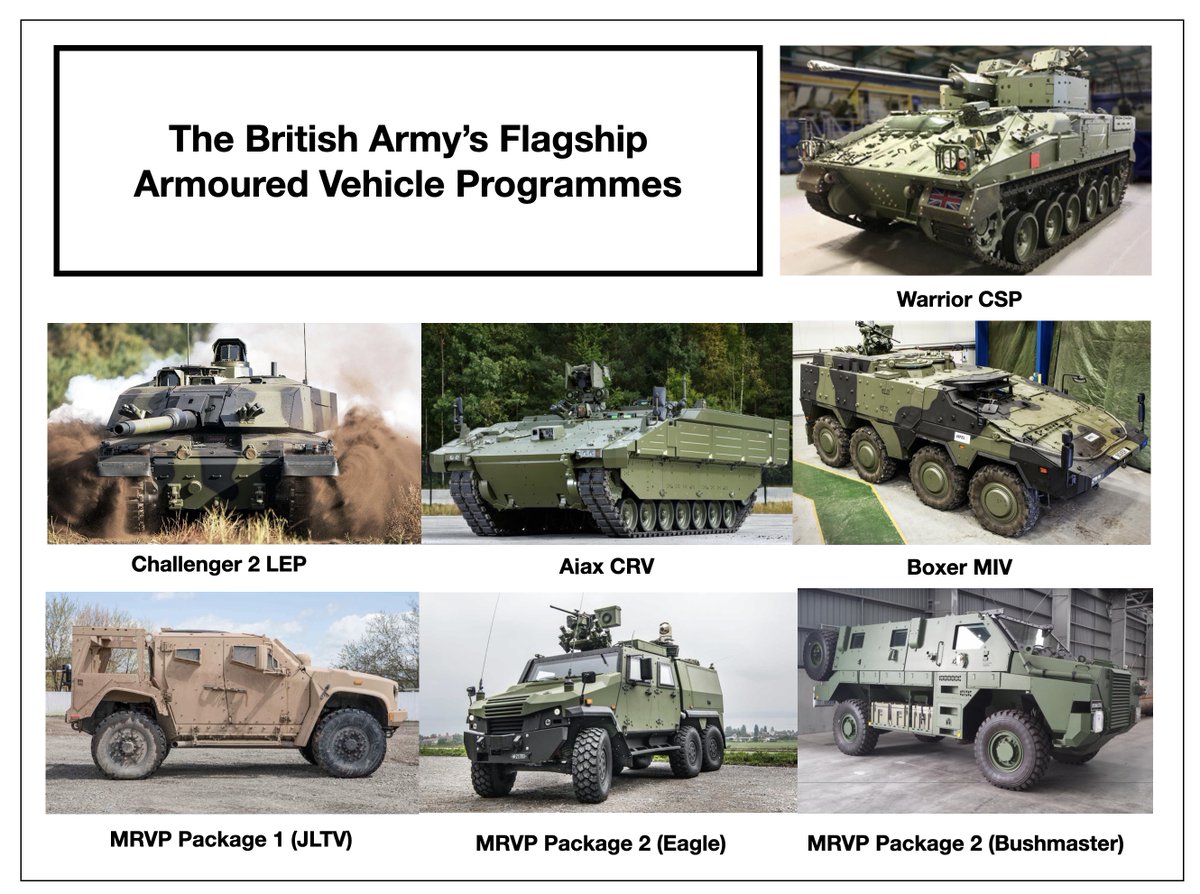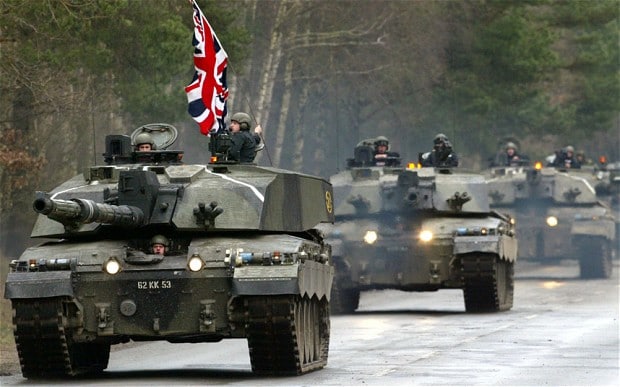
HAS THE INTEGRATED REVIEW BEEN OVERTAKEN BY EVENTS? (Thread)
As most of you know, the UK’s integrated security, defence and foreign policy review is designed to reconfigure our armed forces around realistic policy objectives which are consistent with the threats we face.
1/
As most of you know, the UK’s integrated security, defence and foreign policy review is designed to reconfigure our armed forces around realistic policy objectives which are consistent with the threats we face.
1/
The need to do this was based on a growing mismatch between our defence aspirations and the resources available to support them. Moreover, Britain leaving the EU is an opportunity to review our place in the world, to look beyond Europe, and to embrace a global perspective.
2/
2/
Despite having the world’s 6th largest economy and 8th biggest defence budget, we needed to inject our grand strategy with a healthy dose of reality. We are not a superpower, so instead of trying to do everything badly, we should try to perform fewer defence tasks better.
3/
3/
Resetting our strategic agenda was an inevitable consequence of the Brexit vote in 2016. Many of the IR's underlying assumptions were developed several years ago. So much has happened since that we need to ask ourselves whether the IR has been made redundant by recent events.
4/
4/
COVID-19 is the most significant disruptive factor, but beyond the obvious impact of lockdowns on the economy, China’s poor response to criticism over its transparency and handling of the pandemic is precipitating a new Cold War stand-off.
5/
5/
As much as we might like China to remain a benign trading partner, the mask has slipped. China’s desire for global economic supremacy clearly comes at the expense of our own economic strength. Moreover, its massive military build-up should worry us more than it does.
6/
6/
Meanwhile, Putin's desire to recreate the Soviet Union poses a direct threat to the Baltic States. Russia’s activities below the threshold of conflict remains a major source of concern. The Salisbury attack could have easily gone wrong and resulted in mass casualties.
7/
7/
The reality of today’s geopolitical landscape is that the distinction between peace and conflict has become blurred. We are engaged in a struggle below the threshold. Ukraine and Syria are good examples of this, but so was Israel's sabotage of the Iranian nuclear programme.
8/
8/
We are fighting an information war through which we are struggling to assert the integrity of our democratic system in the face of multiple adversaries who seek to seize to manipulate the narrative, to sow division, and destabilise us using all available means.
9/
9/
When Chief of the Defence Staff, Gen. Sir Nick Carter, was totally correct indenting the need for Britain to operate more effectively in the Grey Zone, But as much as we need to invest in hybrid, cyber and proxy warfare capabilities, they are no substitute for hard power.
10/
10/
Meanwhile, the post War on Terror reset of Britain’s armed forces has continued at a slow pace, but we are gradually adding rebuilding our war chest. Type 45 Destroyers, Astute Class SSNs, Carrier Strike, F-35Bs, upgraded Typhoons, and A400M are impressive new capabilities.
11/
11/
Dreadnought SSBNs, Type 26 and 31 Frigates, the P8 Poseidon MPA, protector UAV and Tempest are under development. Despite a lack of numbers, the Navy and RAF are in reasonable shape. It is the Army that is a worry.
12/
12/
The Army needed modernisation in 2000. Deployments to Iraq & Afghanistan inevitably delayed regeneration while refocusing it around counter-insurgency ops. But among those responsible for allocating tasks and budget, there seems to be confusion about what the Army is for.
13/
13/
By 2010, the need for Army modernisation had become more pressing with the atrophy of legacy equipment types creating a time bomb of block obsolescence. Instead of investment, the 2010 SDSR imposed swingeing cuts leading to a net reduction in size and combat power.
14/
14/
The 2014 Russian annexation of Ukraine changed everything. Like China, Russia refuses to be accountable to anyone but itself. Putin's appetite for territorial expansion is backed-up by an enviable mix of conventional and nuclear weapons. We ignore this risk at our peril.
15/
15/
The threat posed by Russia led to the enhanced forward presence of NATO forces in the Baltic States. Meanwhile, feedback from Ukraine has made it very clear that the high end war fighting capabilities we thought were obsolete - heavy armour - remain relevant and vital.
16/
16/
Russia’s Ukraine exploits have lit a fire under US Army modernisation. It's being reoonfigured around Heavy - Armored Brigade Combat Team, Medium - Stryker Brigade Combat Teams and Light - Infantry Brigade Combat Teams. And China's land forces are copying the same structure.
17/
17/
Britain ought to have 3 deployable divisions comprised light, medium and heavy brigades. (We had much more than this at the height of the Cold War.) Instead, the Army is being told that that 2 armoured brigades, 2 strike brigades and an air assault brigade is unaffordable.
18/
18/
Britain would struggle to fight alongside its NATO allies today. Our EU neighbours: Germany, France, Italy, Sweden, Denmark, and Poland all have credible land forces. The combined effect of each nation contributing a war fighting division gives us the mass needed to deter.
19/
19/
Countries like Australia and Japan are increasing their defence budgets. In the UK, we’re asking whether COVID-19 and Brexit require us to cut defence spending. After years of kicking the Army modernisation can down the road, we will soon be left with only a hollow force.
20/
20/
The situation is like someone who fails to mend a hole in their roof. You can postpone repais for a while, but gradually things get worse. Eventually you reach a point where you have to replace the whole roof. This is always more expensive than sustained regular maintenance.
21/
21/
Much of the debate has been boiled down to the need for tanks. (Tank is Twitterspeak for heavy armour.) Pretending it has become irrelevant and attempting to deploy without it would be the epitome of the Emperor’s new clothes. We cannot counter a peer adversary without it.
22/
22/
Contemporary defence emphasises expeditionary roles. Historically, Britain has always gone out to meet threats at distance, believing this was preferable to ejecting enemies landing on UK soil. But when it comes to home defence, the Army may no longer have suffienct mass.
23/
23/
Whether you buy-in to the above arguments or not, UK opposition parties have so far failed to provide an alternative narrative to define the IR. Fortunately, the academic community has stepped-up, with some suggesting our priorities lie closer to home rather any Asian role.
24/
24/
Perhaps we should be more focused on defending UK approaches and our European neighbours? Balancing what defence absolutely needs to do versus what it can afford to do is never an easy conversation, but right now it's a discussion that needs more input and a wider audience.
/END
/END
• • •
Missing some Tweet in this thread? You can try to
force a refresh

















